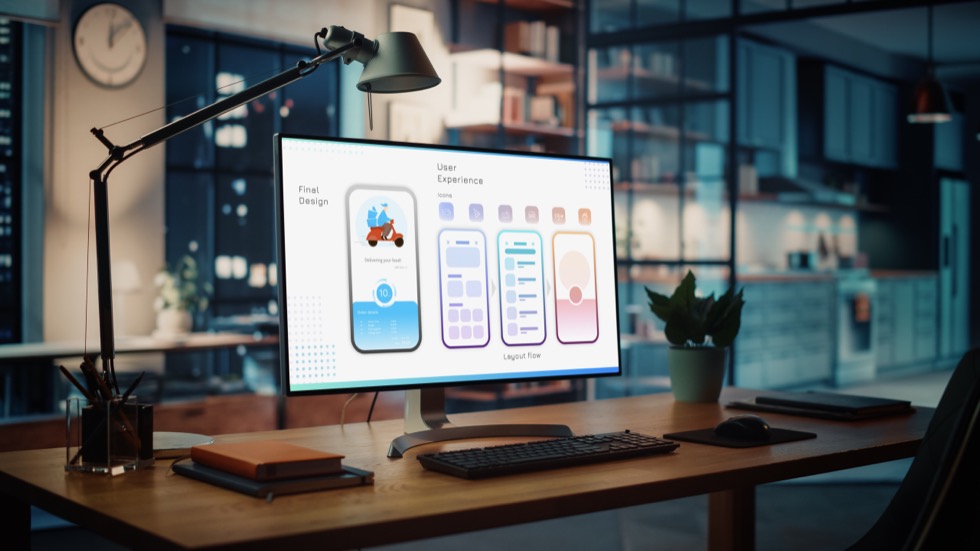User experience (UX) is a user-centered design approach for navigating websites and mobile apps. The higher the intuitive ease of use, the better the user experience. Positive user experience influences a business’s brand image and attracts customers.
Creating and fostering positive user experience is critical for success in the digital business world. UX design attracts customers and influences customer loyalty and long-term retention. The more loyal a customer base, the stronger the business revenue.
This guide discusses current trends and emerging technologies affecting UX and predictions for the future.
Current UX Trends
UX is alive and well with a variety of popular trends.
Current UX trends include incorporating the following methods:
- Mobile-first design and responsive interfaces
- Increasing mobile use has put mobile device design at the forefront.
- Responsive interface design ensures apps automatically adjust to a device screen size without interrupting functionality.
- Voice user interfaces (VUI) and conversational UX
- You know them as Siri and Alexa. Virtual assistants allow users to interact with products using only voice interactions.
- Conversational UX uses voice, chat, and messaging to mimic human-to-human conversation.
- Minimalistic and intuitive interfaces
- UX designers are challenged with minimalistic UX that eliminates unnecessary content and focuses on critical elements.
- Intuitive user interface design is UX’s goal. Intuitive interfaces function in the manner a user expects and understands.
- Personalized and context-aware experiences
- Personalized UX is common in the customer service industry, where AI and ML use customer data to create a personal connection.
- Context-aware UX takes personalization a step further by providing a user experience based on the current environment, location, or context.
- Accessibility and inclusive design
- Accessible UX design attracts a wider variety of customers, including those with disabilities. The more customers, the higher the business value.
- Inclusive design principles are used to attract a wider variety of users based on specific human traits including race, ethnicity, and gender.
- Microinteractions and subtle animation
- Microinteractions make it easier for users to complete a task. Microinteractions use subtle animation to increase user engagement.
- Subtle animation captures a user’s attention without being overwhelming.
- Gamification and immersive experiences
- UX designers merge aspects of gaming into the design to improve user engagement and capture attention.
- Immersive experiences use gamification to draw users deeper into a more exciting experience.
Emerging Technologies Shaping UX
AI, VR, ML, and AR are emerging technologies for UX design. Learn to leverage the power of these technologies to create immersive and interactive designs in various ways.
Emerging technologies impacting UX:
- Artificial Intelligence (AI) and Machine Learning (ML)
- Provide personalized recommendations and predictive insights.
- Use natural language processing to enable enhanced personalization.
- Augmented Reality (AR) and Virtual Reality (VR)
- Provide Immersive and interactive experiences that go beyond the typical screen.
- Allow for virtual product try-ons and visualizations. Users can experience products in real time.
- Internet of Things (IoT) and connected devices
- Seamless integration with all devices and evolved smart device interactions.
- Data-driven personalization based on data retrieved from connected devices.
- Wearable technology
- Health and fitness tracking for remote patient monitoring.
- Contextual notifications and alerts for medical providers and patients.
Predictions for the Future of UX
The future of UX is complex and exciting. UX designers must learn how to leverage emerging technology to provide new, exciting, and engaging user experiences using a wide variety of methods.
The future of UX includes:
- Hyper-personalization and anticipatory design
- AI-driven customization based on known user preferences.
- Predictive design that anticipates a user’s needs.
- Multi-model experiences
- Integration of voice, touch, and gestures.
- Adaptable interfaces that adjust per device and user.
- Ethical and responsible design
- Ensures user privacy and data security.
- Engages diverse users with variable needs.
- Emotional and empathetic design
- Understands user emotions and includes empathy.
- Human-centered design to attract users.
The future is bright with new opportunities for UX design, from emerging technologies leveraging the data power of AI and ML to incorporating AR and VR to formulate designs in a virtual reality world where customers can interact in a larger variety of ways. The current trends are precursors for the future. The future of UX will deliver previously unimaginable new user experiences that engage and delight.

